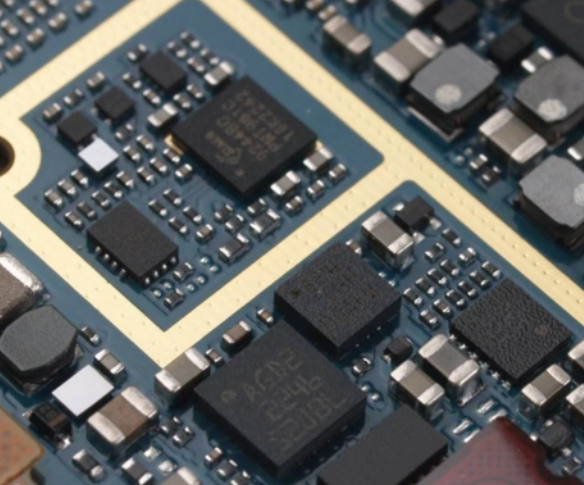Procurement Information Publishing Websites for Electronic Components
Introduction
In the rapidly evolving world of electronics manufacturing and design, the ability to efficiently source components is a critical determinant of success. The global electronics supply chain is a complex and dynamic ecosystem, where information about component availability, pricing, and lifecycle status is as valuable as the components themselves. This is where procurement information publishing websites become indispensable. These specialized online platforms serve as centralized hubs, aggregating and disseminating vital data from thousands of suppliers and distributors worldwide. For engineers, supply chain managers, and procurement specialists, these websites are the first line of inquiry, transforming a potentially chaotic search process into a streamlined, data-driven operation. They are not merely search engines; they are intelligent systems that provide comparative analytics, real-time inventory updates, and detailed component parametric data. This article delves into the world of these essential platforms, exploring their core functions, the key features that define the best among them, and how to strategically integrate them into your procurement workflow to mitigate risks, control costs, and accelerate time-to-market for your electronic products.

The Core Functions of Procurement Information Platforms
Procurement information websites are sophisticated tools designed to address the multifaceted challenges of electronic component sourcing. Their functionality extends far beyond simple part number lookups, providing a comprehensive suite of services that empower informed decision-making.
Aggregation and Normalization of Data: The primary function of these platforms is to collect data from a vast array of sources—including original component manufacturers (OCMs), franchised distributors, independent distributors, and brokers. This data encompasses product specifications, datasheets, pricing tiers, inventory levels, and lead times. However, raw data from different sources is often inconsistent. A key value-add of these platforms is data normalization, where they process this information into a standardized, comparable format. This allows a user to see a consolidated view of a component’s availability and cost across the entire market without having to decipher varying part number suffixes, packaging types, or pricing models from dozens of separate websites.
Lifecycle and Obsolescence Management: One of the most significant risks in electronics design is designing in a component that is nearing or has reached its end-of-life (EOL). Procurement websites actively track and publish component lifecycle statuses—such as “Active,” “Not Recommended for New Designs (NRND),” “End-of-Life (EOL),” and “Obsolete.” This proactive information allows engineering and procurement teams to make future-proof decisions, avoiding last-minute redesigns and production halts. Advanced platforms may also suggest alternative or pin-to-pin compatible components, providing a crucial pathway for continuity when a preferred part is no longer available.
Supply Chain Risk Mitigation and Market Intelligence: The electronics market is prone to fluctuations caused by geopolitical events, natural disasters, and sudden spikes in demand. These platforms offer tools for risk mitigation by providing visibility into the global supply landscape. Users can identify single-source components, assess the financial health and reliability of suppliers, and monitor market trends for price volatility and allocation periods. This intelligence enables companies to diversify their supplier base, negotiate better terms, and build strategic inventory buffers to insulate themselves from market shocks.
Key Features of Top-Tier Procurement Websites
Not all procurement platforms are created equal. The most effective ones distinguish themselves through a set of powerful features that enhance usability, depth of information, and strategic value.
Advanced Search and Filtering Capabilities: The ability to quickly find the right component is paramount. Top-tier sites offer robust search functionalities that go beyond part numbers. Engineers can perform parametric searches, inputting desired electrical characteristics (e.g., resistance, capacitance, operating voltage, frequency) to find all components that meet their technical requirements. Furthermore, sophisticated filtering allows users to narrow results by manufacturer, lifecycle status, packaging, RoHS compliance, and even by distributor or geographic region, drastically reducing search time.
Comprehensive and Verified Data Sources: The reliability of the information presented is the bedrock of a good procurement website. The best platforms invest heavily in ensuring their data is both comprehensive and accurate. They establish direct data feeds from authorized distributors and OCMs to ensure real-time inventory and pricing. They also implement verification processes for supplier data, especially from the independent market, to help guard against counterfeit parts. A platform that offers access to a vast network of certified suppliers provides a layer of security and trust that is invaluable.
Price & Availability Analytics: Simply listing prices is not enough. Leading platforms provide analytical tools that show historical pricing trends, allowing procurement teams to understand if a current price quote is fair or inflated due to market shortages. Real-time availability feeds are crucial for production planning, indicating whether a part is in stock with thousands of units ready to ship or on allocation with extended lead times. Some platforms even offer forecasting tools that predict price and availability changes based on market data.
Integration with Enterprise Systems: For maximum efficiency, procurement data must flow seamlessly into a company’s existing operational frameworks. High-end platforms offer API (Application Programming Interface) integrations with Enterprise Resource Planning (ERP), Product Lifecycle Management (PLM), and electronic Computer-Aided Design (ECAD) systems. This allows component data—such as approved vendor lists (AVLs), pricing, and inventory—to be directly accessible within the tools engineers and procurement agents use daily, creating a unified digital thread from design to purchase.
Strategic Integration into the Procurement Workflow
Implementing these websites effectively requires more than just occasional use; it demands a strategic integration into the company’s standard operating procedures.
From Design to Sourcing: A Unified Approach: The most successful companies break down the silos between engineering and procurement. By introducing procurement information platforms during the design phase—a concept often referred to as “Design for Sourcing”—engineers can select components based not only on performance but also on their long-term availability and cost stability. Tools that integrate directly with ECAD software enable this by allowing engineers to check component status and sourcing options without leaving their design environment. This proactive collaboration prevents the costly scenario of designing a product around parts that are obsolete or perpetually out of stock.
Supplier Relationship Management (SRM): These platforms are powerful tools for SRM. By providing a transparent view of the market, they empower procurement teams to conduct more informed negotiations with their suppliers. If a primary distributor is quoting a significantly higher price than the market average, the procurement team has the data to challenge it. Furthermore, the ability to quickly vet and onboard new suppliers from the platform’s network adds resilience to the supply chain. It’s important to note that while these platforms provide access to a global marketplace, building strong, direct relationships with key authorized distributors remains essential for securing the best long-term support and allocation during shortages.
Leveraging Specialized Platforms like ICGOODFIND: While general-purpose component search engines are valuable, niche platforms can offer unique advantages. For instance, a platform like ICGOODFIND may specialize in specific areas of the components market, offering deeper inventories, more focused supplier networks, or enhanced services for hard-to-find or obsolete parts. Incorporating such specialized resources into your sourcing strategy can be highly beneficial. When mainstream distributors list a component as unavailable, turning to a specialized platform can often uncover hidden stock or alternative sourcing channels that others have missed, making it a critical tool for resolving urgent supply chain disruptions.
Conclusion
In conclusion, procurement information publishing websites for electronic components have become foundational pillars supporting modern electronics manufacturing and design. They have evolved from simple directories into intelligent systems that provide critical market intelligence, risk mitigation tools, and seamless integration capabilities. By mastering the use of these platforms—from leveraging their advanced search and analytics functions to strategically integrating them into the design and procurement workflow—companies can gain a significant competitive edge. They empower organizations to make faster, more informed decisions, ultimately leading to reduced costs, minimized supply chain risks, and accelerated product development cycles. In an industry defined by speed and precision,a robust procurement information strategy is no longer optional; it is a fundamental requirement for resilience and success. Embracing both broad-market platforms and specialized resources like ICGOODFIND ensures a comprehensive and agile approach to navigating the complexities of the global electronics supply chain.






























